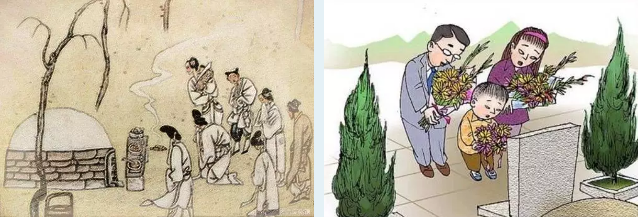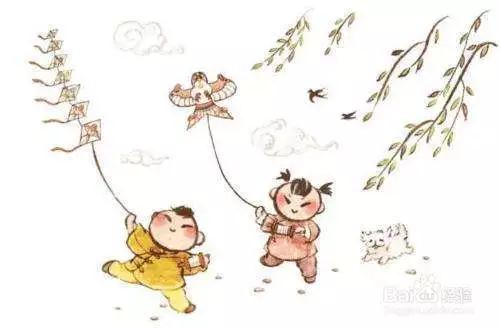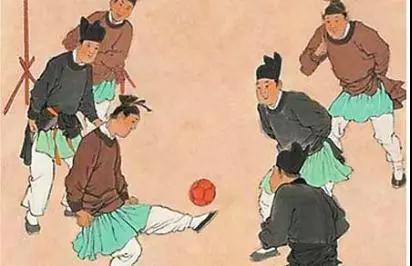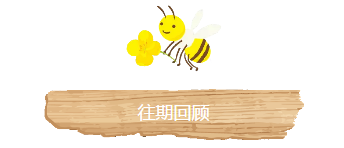
清明节又称扫墓节,是家人们纪念并凭吊祖先的时节,因此英文通常为“Tomb-sweeping Day”,但作为节气的清明节有时也被译为“Pure Brightness Day”,强调此时气候的清爽明媚,而最简单的清明节翻译则为“Qingming Festival”。
从不同的英文翻译可以看出,清明节是一个同时囊括了悲与欢、追思和团聚的民间节日,具有重要的人文价值。清明节的“悲”缘于对祖先的追思、对亡故亲人的怀念和对英烈的缅怀。清明节的“欢”则源于清明时节多样的传统活动,比如踏青、放风筝、蹴鞠等。
扫墓 Tomb Sweeping
清明时节雨纷纷,路上行人欲断魂。清明扫墓,谓之对祖先的“思时之敬”。其习俗由来已久。明《帝京景物略》载:“三月(农历)清明日,男女扫墓……拜者、酹者、哭者、为墓除草添土者……”扫墓习俗在秦以前就已有之,盛行于唐朝,并相传至今。

Tomb sweeping is regarded as the most important custom in the Tomb-sweeping Day. Cleaning the tomb and paying respect to the departed people with offerings are the two important parts of remembering the past relatives. The departed people's favorite food and wine are taken to sacrifice to them, along with spiritual money. This is all burned in the hope that the deceased are not lacking food and money. Kowtows before the tablets set up for the dead are made. Nowadays, withcremation taking over from burying, the custom has been extremely simplified in cities. Only flowers are presented to the dead relatives and revolutionary martyrs.
知识锦囊
spiritual money:纸钱
deceased:已故的
kowtow:叩头
cremation:火葬
revolutionary martyrs:革命烈士
与清明节扫墓的悲伤相反,人们在这个春光明媚的日子里,也有很多种可以享受春天的方式。
踏青 Spring Outings
踏青又叫春游。古时叫探春、寻春等。四月清明,春回大地,自然界到处呈现一派生机勃勃的景象,正是郊游的大好时光。中国民间长期保持着清明踏青的习惯。

Not only is it a day for commemorating the dead, it is also a time for people to enjoy themselves. During April, everything in nature takes on a new look, as trees turn green, flowers blossom, and the sun shines brightly. It is a fine time to go out and to appreciate the beautiful scenes of nature. This custom can be traced back to the Tang Dynasty (618-907A.D.) then followed by each dynasty later till today. So visitors can be seen everywhere during the month of the festival. Spring outings not only add joy to life but also promote a healthy body and mind.
知识锦囊
commemorate:纪念
放风筝 Flying Kites
放风筝也是清明时节人们所喜爱的活动,人们不仅白天放风筝,夜晚也喜欢放,夜里在风筝下挂上一串串彩色的小灯笼,像闪烁的明星,被称为“神灯”。过去,有的人把风筝放上蓝天后,便剪断牵线,任凭清风把它们送往天涯海角,据说这样能除病消灾,给自己带来好运。

People like flying kites on Qingming Festival or Tomb-sweeping Day, no matter in the daytime or at night. In the evening, they attach strings of little colorful lanterns to the kite, which look like twinkling stars in the sky, called "sacred lantern". In the past, some people would cut off the thread when the kite flew to the sky, letting it drift to wherever the wind took it to. It is said that this can cure diseases, prevent disasters and bring good luck.
知识锦囊
sacred lantern:神灯
蹴鞠 Cuju
鞠的球皮用皮革做成,球内用毛质物填充。蹴鞠,就是古时候的踢足球游戏,是清明节时人们非常喜爱的一项活动。相传蹴鞠是黄帝发明的,最初的目的是用来训练武士。

In ancient China, Ju was a kind of rubber ball with leather skin outside and feather stuffed inside. Cuju means "kicking the ball with foot". It was a popular sport played by ancient Chinese which is similar to today’s soccer game. Cuju arouses great antagonism between the players. During the match, the players ran and strived to control the ball like fighting against the enemy in the battle. And there was a referee specially set to guarantee the fairness of the game.
知识锦囊
rubber ball:橡皮球
antagonism:对抗性
referee:裁判员
除了扫墓、踏青、放风筝、蹴鞠之外,清明节还有很多传统习俗,比如打马球(polo on horse or jiju)、插柳(inserting willow)、吃青团(eating green rice ball)等,每一项活动都是趣味与人文情怀兼备,体现着自然与人和谐统一的传统观念。
 往期回顾往期回顾
往期回顾往期回顾
“疯帽子”为什么会发疯?《爱丽丝梦游仙境》中的那些好玩的英语常用语
教学素材 | “铁娘子”的外交之道 撒切尔夫人白宫演讲视频及原文
教学素材 | 奥普拉2018金球奖教科书式演讲震撼全球 演讲视频及原文